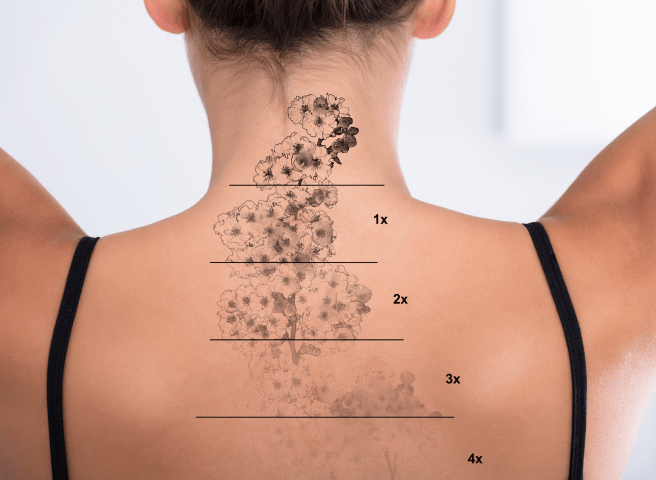The History of Tattoo Removal

Tattooing has been an age-old form of self-expression, a process that reflects personal identity, culture, and creativity. However, as long as tattoos have existed, so has the desire to remove them. Whether due to regret, societal pressures, or changing personal values, the concept of tattoo removal has evolved considerably over the centuries. This blog will provide a fascinating exploration of the history of tattoo removal, demonstrating how humanity has sought to erase inked marks from skin—from rudimentary beginnings to advanced laser technologies. Additionally, this post will explain how modern techniques like laser removal work and explore common considerations, such as tattoo removal costs.
Early Understanding of Body Modification
The history of tattooing stretches back thousands of years. Societies across Egypt, Polynesia, ancient Rome, and beyond used tattoos to signify status, beliefs, and rites of passage. However, not all tattoos stood the test of time in the eyes of their bearers. Despite the lack of scientific insight or specialized technology, early humans devised several crude methods to erase tattoos.
The Earliest Methods
Historical evidence suggests that in ancient societies, tattoo removal relied on methods as painful as their application. Techniques involved physically abrading the skin, cutting out the tattooed area, or applying harsh substances like salt to “dissolve” the ink. These primitive methods were often dangerous and left severe scars, reflecting both the limited medical knowledge of the time and the societal weight tattoos often carried.
For example, in ancient Rome, soldiers branded with dishonorable marks (tattoos) sought to rid themselves of these symbols by excising the skin. This brutal method highlighted the stigma associated with certain tattoos and the lengths individuals were willing to go to escape social judgment.
The Evolution of Tattoo Removal in the Middle Ages and Renaissance
Medical Advancements and Herbal Remedies
By the Middle Ages, tattoo removal attempted to adopt a slightly more “refined” approach. Herbalists and early physicians utilized combinations of herbal ointments and chemical solutions to break down pigments. These concoctions were applied to the tattooed area to fade marks over time. Though minimally effective and inconsistent, this step marked the early intersection of tattoo removal and organized medicine.
Tattoo Removal in Europe
During the Renaissance, when societal values prioritized unblemished skin, tattoo wearers faced even greater pressure to remove their ink. Innovators attempted chemical peels involving caustic substances like vinegar and limewater to strip away the top layers of the dermis. However, like their ancient predecessors, these methods often led to infection, scarring, and incomplete removal.
Tattoo Removal in the 19th and Early 20th Centuries
The Emergence of Dermatological Solutions
The Industrial Revolution spurred advancements in dermatology and greater interest in eradicating unwanted tattoos. The 19th century saw the development of primitive surgical techniques, whereby tattooed areas were removed using scalpels under anesthesia. While this operation was marginally safer than previous methods, it remained inaccessible to the majority of individuals due to its exorbitant cost and risk of complications.
Around this same time, doctors experimented with chemical treatments such as tannic acid, a solution that promised to fade tattoos but often caused corrosive damage to skin tissue.
Societal Perspectives on Tattoo Removal
With tattoos often associated with niche groups, such as sailors and criminals, mainstream society during the Victorian and Edwardian eras deemed tattoos undesirable. Consequently, tattoo removal services began to emerge, catering to those wishing to assimilate into conventional norms. However, due to high costs and limited success rates, these services were often reserved for the upper classes.
The Turning Point: The 20th Century and the Advent of Modern Techniques
Dermabrasion and Cryosurgery
By the mid-20th century, tattoo removal entered a new phase of development. Techniques like dermabrasion—the controlled sanding of the skin—gained popularity. This often-imprecise method physically reduced the skin layers where ink pigments resided, though it carried a high risk of scarring and infection.
Cryosurgery, another notable method, involved freezing the skin with liquid nitrogen before removing the tattooed layers. While heralded as more advanced, cryosurgery presented similar drawbacks to dermabrasion, leaving many patients dissatisfied with the painful and inconsistent results.
Cosmetic Tattoo Covering
For individuals unable to afford or endure surgical tattoo removal, cosmetic tattoos emerged as a temporary solution. These procedures introduced flesh-colored ink to camouflage existing tattoos, though discoloration and fading often undermined their efficacy.
The Laser Revolution in Tattoo Removal
The Birth of Laser Technology
The 1960s marked a monumental shift in tattoo removal with the invention of laser technology. Researchers discovered that certain laser wavelengths could selectively target the pigments embedded in tattooed skin. This innovation minimized damage to the surrounding tissue and drastically reduced scarring—though early lasers were crude and less efficient than today’s systems.
How Does Tattoo Removal Work with Modern Lasers?
Modern tattoo removal relies on sophisticated Q-switched lasers and, more recently, picosecond laser technology. The process works on the principle of selective photothermolysis. Laser pulses emit energy that breaks down tattoo ink into tiny fragments, which are subsequently removed by the body’s lymphatic system. Different wavelengths cater to specific ink colors, ensuring precise treatment that accommodates multicolor tattoos.
This method offers unparalleled safety, efficiency, and effectiveness compared to historical approaches. Yet, factors such as tattoo age, location, and the ink type influence the number of sessions required, reflecting how unique every tattoo removal process is.
The Cost of Tattoo Removal Today
Tattoo removal costs vary widely depending on factors like tattoo size, complexity, and clinic location. On average, individuals can expect to pay between $200 and $500 per session, with multiple sessions needed for complete removal. While the expense may seem significant, the modern process’s precision and reduced health risks justify its higher price compared to older, less effective methods.
Cultural Shifts and Contemporary Tattoo Removal Trends
From Taboo to Choice
Today, tattoo removal is no longer an indication of regret or social conformity alone. Instead, it reflects personal growth, evolving aesthetics, and even technical corrections (such as fixing tattoo placement or design flaws).
For tattoo enthusiasts and wearers alike, the ability to remove tattoos grants greater flexibility in exploring body art without permanence. Furthermore, the rise of companies like Laser Eraser ensures that individuals receive expert care during this transformative process.
A Growing Industry
With the global tattoo removal market projected to exceed $4.8 billion by 2029, the demand for advanced removal solutions is growing. Whether driven by younger generations’ evolving tastes or professional industries’ specific requirements, the ability to adjust one’s canvas speaks volumes to the interplay of artistry, technology, and individuality.
Rediscover the Freedom of Choice
From the physical abrasion of ancient Rome to the precision of laser technology, the history of tattoo removal highlights humanity’s enduring relationship with self-expression—and, by extension, reinvention.
If you’re thinking about removing or refining your tattoo, Laser Eraser is here to guide you through the process with expertise and care. Explore how laser technology can help you reimagine your canvas today.

